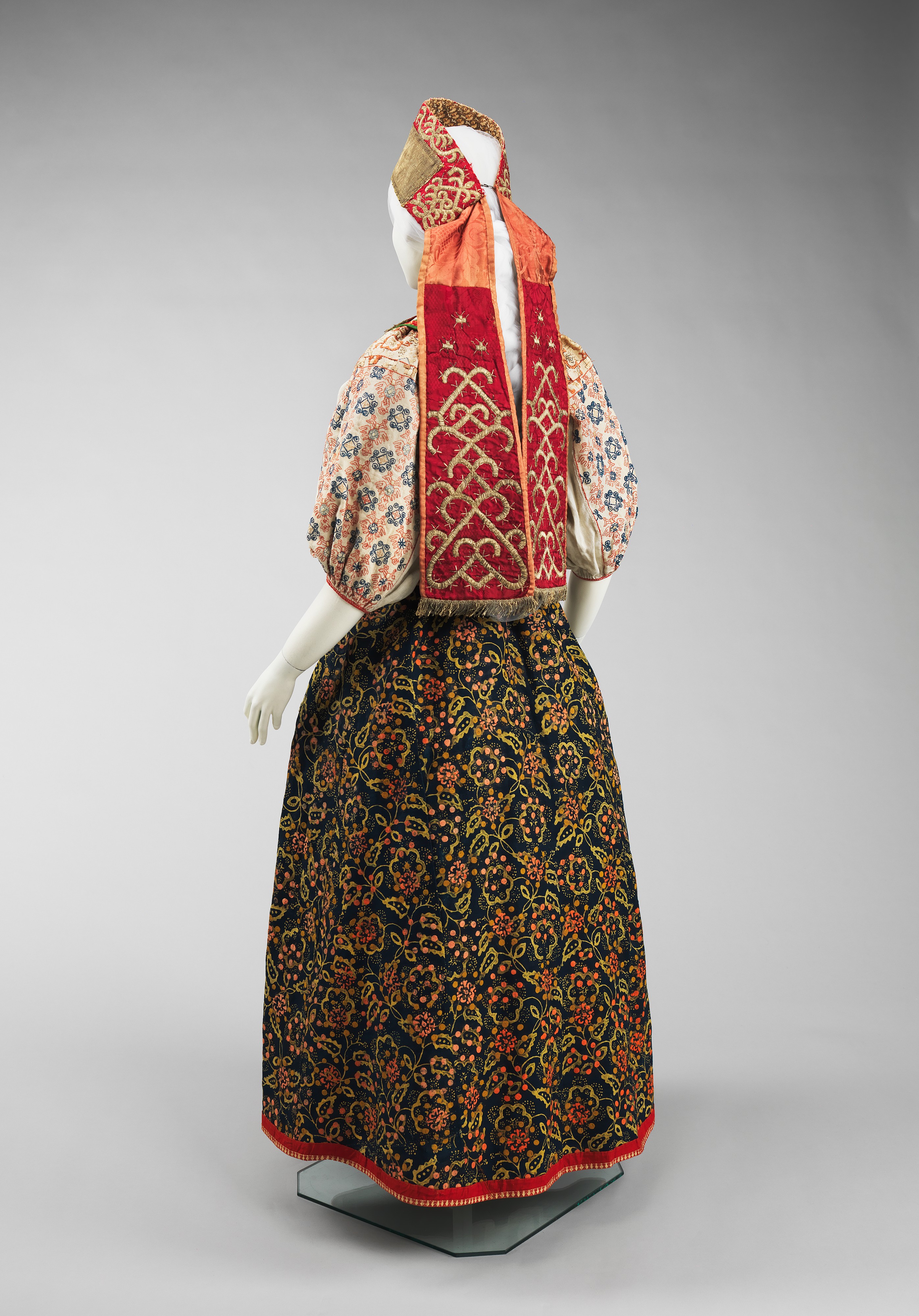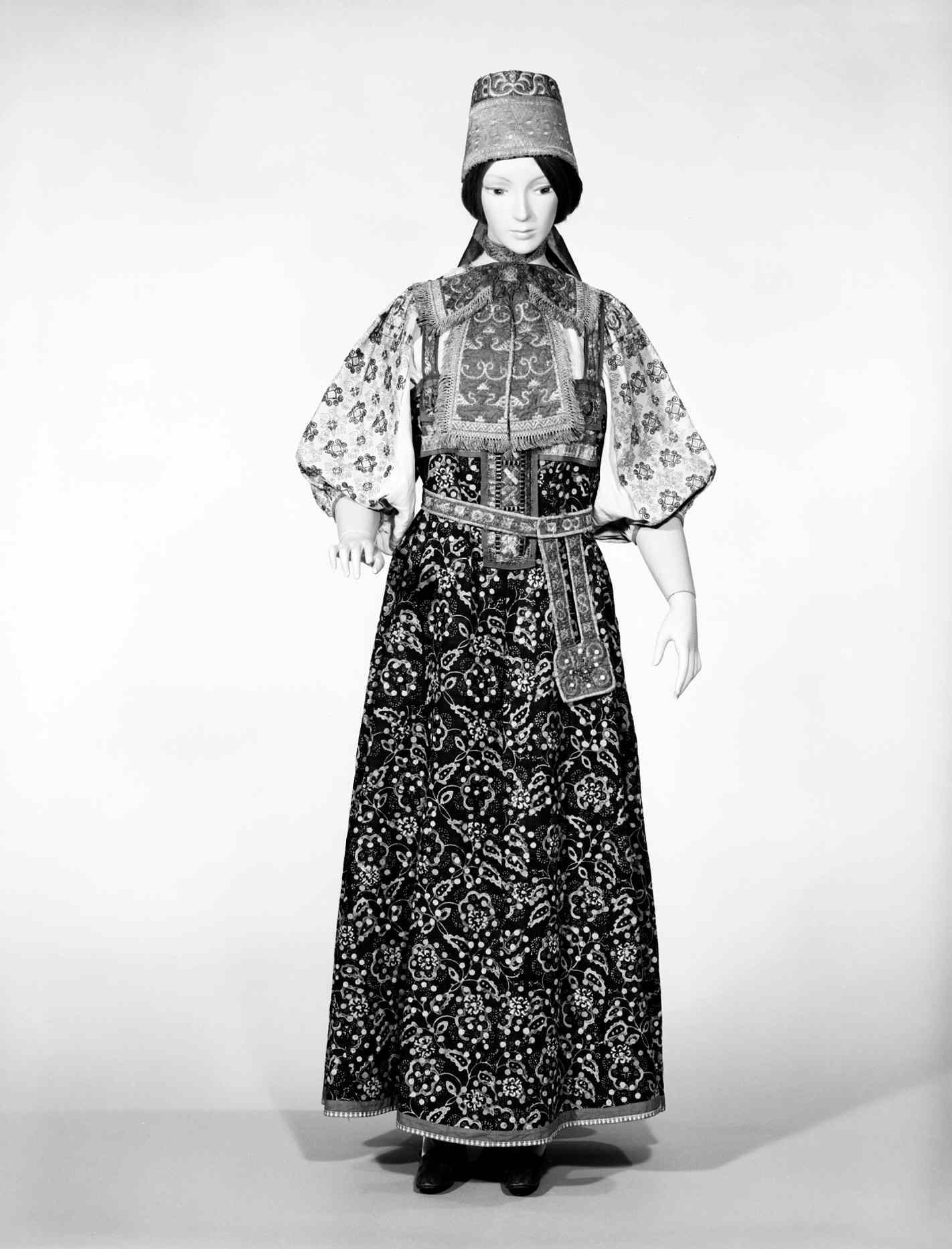Ensemble
Not on view
This object is from the collection of Natalia de Shabelsky (1841-1905), a Russian noblewoman compelled to preserve what she perceived as the vanishing folk art traditions of her native country. Traveling extensively throughout Great Russia, she collected many fine examples of textile art of the wealthy peasant class. From the 1870s until moving to France in 1902, Shabelsky amassed a large collection of intricately embroidered hand-woven household textiles and opulent festival garments with rich decoration and elaborate motifs. The Brooklyn Museum holdings include many fine examples including the majority of the garments. Portions of Shabelsky's collection are also housed at the Museum of Fine Arts, Boston, the Cleveland Art Museum, and the Russian Museum of Ethnography in St. Petersburg.
The Brooklyn Museum's holdings include four complete ensembles. These include a sarafan, blouse, kokoshnik, and sometimes a belt and epanechka, a short bodice identical in shape to the sarafan.
(a) Traditional Russian costume consists of straight, flowing lines. Beginning at the turn of the 18th century, the sarafan, a long, sleeveless dress, became the most popular article of peasant women's clothing in the Northern and Central regions of Russia. The style was worn over a blouse and often accompanied by a belt or apron. The bold printed pattern creates a rich appearance in combination with the traditional gilt metallic embroidery on red.
(b) Embroidery was used in much the same way as tattooing to protect the wearer with symbols of power. It is for this reason that embroidery motifs are so commonly placed around the edges of garments, such as the neck and wrists where the body is most vulnerable. Conversely, embroidery is very often added over the upper arm muscles, symbolizing strength. The double-headed imperial eagle is common to many cultures throughout history, most notably Byzantium. Through Ivan III's marriage to Zoe Palaeologina, niece of Byzantine emperor Constantine XI, the heraldic symbol spread to Russia. The dual heads were meant represent the secular and religious sovereignty of the monarch, as well as power over the East and West.
(c) The textile composing this bow is typical of the Russian style of heavy gilt embroidery and fringe. The geometric patterns, particularly those on the bow loops are possible derivative of the traditional goddess motif. The figure is commonly depicted with upraised arms with later depictions very stylized, resembling a plant or tree of life.
(d) Headdresses, or kokoshniks had the greatest abundance of ornamentation of any type of garment in Russia. They were most often made of damask woven with gilt metallic threads or velvet with gold embroidery. The wealthy peasant class decorated their kokoshniks with pearls and precious stones. The headdresses worn by maidens exposed their hair, considered a prize possession in Russian culture.
(e) This belt is quite fine, embroidered in gilt metallic threads on red silk. The colored stone and mother-of-pearl accents make this a special piece, likely belonging to a wealthy and important family.
This image cannot be enlarged, viewed at full screen, or downloaded.
This artwork is meant to be viewed from right to left. Scroll left to view more.




